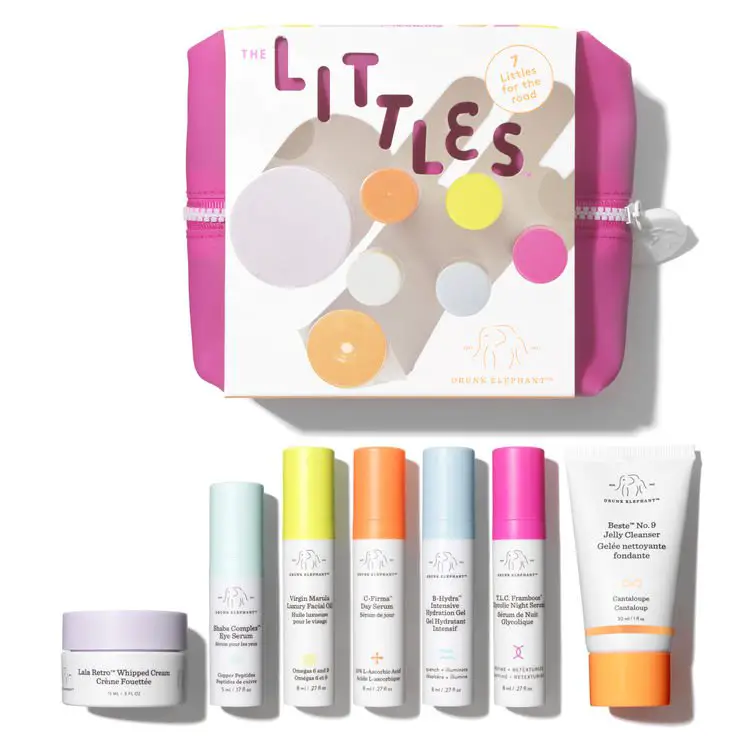
Drunk Elephant. There’s been a price drop across the board on the Drunk Elephant range and we can only assume from this that the brand wasn’t selling nearly as well as expected. Plenty of brands come over to the UK to the US and do a straight conversion from dollar to pound without taking the difference in value into account. So, for example, a product that costs $100 in the US would attempt to be sold for £100 in the UK. Today a dollar equates to 79 pence so you can see how the brand is quids in if they can get away with it. Price parity is something that should happen as standard and yet it consistently doesn’t until enough negative attention is given. Much as I like several of the DU products, it doesn’t mean I like the change in the brand since it took on investors. It’s gone from being a sweet, simple brand with a strong back-story to an unseemly grab-fest. Customers who have already paid for their products will be given the parity refund.

Sunday Riley Fake Reviews. Oh dear. A leaked email from Sunday Riley management to its employees asking them to open fake Sephora accounts in order to leave positive reviews is doing the rounds. Amazingly, the brand confirmed that it had done exactly that (on the @EsteeLaundry Instagram account – it’s an absolute must-follow for anyone who loves acerbic critique and insider gossip) but reasoned that competitor brands leave negative reviews on their products. It’s obviously highly unethical to fake reviews either way, but it does go on and another reason why anything other than independent reviews cannot be relied upon. Sephora so far has played the innocent but it’s lazy on their part and disrespectful to their customers not to take this more seriously than they do.

Goop. Gwyneth Paltrow’s website, Goop, is easy-pickings for the nay-sayers, but she’s recently been reported to Trading Standards and the Advertising Standards Authority in the UK for selling products that can’t back up their own claims. I’ll offer up the ‘Medicine Bag’ containing 8 crystals for £76. If you love crystals, great, but they’re not medicine and shouldn’t be put in the same sentence, in my view. If they give you peace and help you feel better, that’s wonderful, but there is no medical science that backs up crystals as treatment, and it’s a site that talks a lot about science.

P&G Olay vs Solav. In the department of Not Enough To Do, lawyers took on an acne product called Solav from Nelovy Pharma, decreeing that the S on the packaging in the word Solav wasn’t obvious enough and it looked like Olav. Which in their world, would confuse the world enough they might think it was Olay. Even in Great Britain, we know the difference between Y and V and if we didn’t we’d be asking for Yaseline and Yichy. Anyway, Olay lost. Say no more.

ASA vs Johnson & Johnson AND Dermalogica AND Clearasil. All three brands have fallen foul of regulations concerning claims on treating acne. Acne falls into a very tricky skin care area because products should not claim to treat or prevent a medical condition and yet acne, as opposed to spots or breakouts, is classed as a condition. Many brands walk this fine line and some even underclaim what their products can do so they don’t fall into this exact problem. Once you are declared a medical product, all of the rules change about how you can be sold and where you can be sold as well as how you advertise. None of the products can appear again in the form that caused the complaints although you would have to question whether it was a competitor brand that made these claims because it seems odd to me that all three got their knuckles rapped at once.

Lagom. What is that? Well, it’s the replacement for Hygge. Hygge was all about being cosy and snug, Lagom is equally Scandi but is all about life balance and means ‘just the right amount’. Just the right amount of everything sounds like a great plan to me and can apply to food, drink, beauty, work, sleep – anything at all. See it applied to beauty products in the not too distant future.

Beauty Pie. Dupes and copies are so common now in the beauty industry that nobody bats an eyelid any more. It’s becoming increasingly obvious that Beauty Pie is heading down this route but some are starting wonder whether, far from being dupes, they’re actually exactly the same thing as the real deal. There’s always been something a little mysterious about the whole ‘buying straight from the factory’ claims from the brand (I still really don’t like the whole monthly fee thing – just be a shop and don’t stranglehold consumers) but some make up products are literally identical, in colour, texture, duration of wear, to the originals. After all, there aren’t *that* many make up factories if you exclude China (where no BP products are made). As well as the obvious CT homage above, they’ve recently produced a marble effect blush that is exactly the same as Hourglass. Estee Lauder, er, homaged CT last year :-). Make up patents are notoriously hard to lock down which is why so many can dupes happen but Hourglass is Unilever and they have busy lawyers.

At the back of my mind, I think even before CT and before Lauder, above, there was a face palette like this doing the rounds? Does anyone remember?

Trend Predictor: Beauty brands dabbling in apparel – we’re right at the very beginning of this but it’s a thing and it will happen. “UD Made Me DU It.” I know.. genius ;-)).
Sources & Resources: Global Cosmetics News, CosmeticsBusiness, Happi.com, FT.com.




Leave a Reply